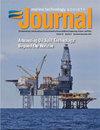Creating a Diversion: Why the Mid-Barataria Sediment Diversion (MBSD) Project Is Unpopular Among Coastal Communities in Southeast Louisiana
IF 0.7
4区 工程技术
Q4 ENGINEERING, OCEAN
引用次数: 1
Abstract
Abstract The Mid-Barataria Sediment Diversion (MBSD) project, located in Barataria Bay, Southeast Louisiana, is one of the most ambitious coastal restoration projects in U.S. history. The MBSD project is designed to convey sediment-rich water from the Mississippi River through the levee system and into the coastal marshes of the Barataria basin. The MBSD project is intended to slow, and perhaps even reverse, coastal erosion through alluvial sedimentation and the augmentation of freshwater wetland vegetation communities. In spite of the importance of the MBSD project for the U.S. Army Corps of Engineers and Coastal Protection and Restoration Authority of Louisiana, it is extremely unpopular among coastal communities along the Barataria Bay coast and beyond. Based on our ethnographic research in Lower Plaquemines Parish, we provide some insights concerning why this level of opposition exists. Above all, the MBSD project is perceived as highly threatening to key marine fish species targeted by small-scale commercial fishers, especially shrimp (Farfantepenaeus aztecus and Litopenaeus setiferus) and oysters (Crassostrea virginica). Small-scale fishing is crucially important to the social and economic systems involved in risk buffering and community resilience, as well as a key feature of social identity and source of profound place attachment. While planning for the MBSD project has considered impacts to coastal communities in strictly financial and environmental terms, it has failed to adequately consider its potential social and social-psychological consequences among coastal communities.创造一个转移:为什么barataria中部沉积物转移(MBSD)项目在路易斯安那州东南部的沿海社区中不受欢迎
位于路易斯安那州东南部巴拉塔里亚湾的中巴拉塔里亚沉积物转移(MBSD)项目是美国历史上最雄心勃勃的海岸恢复项目之一。MBSD项目旨在通过堤坝系统将富含沉积物的水从密西西比河输送到Barataria盆地的沿海沼泽。MBSD项目旨在通过冲积沉积和淡水湿地植被群落的增加来减缓甚至逆转海岸侵蚀。尽管MBSD项目对美国陆军工程兵团和路易斯安那州海岸保护和恢复管理局非常重要,但它在巴拉塔里亚湾沿岸及其他地区的沿海社区非常不受欢迎。基于我们在下普拉克明教区的民族志研究,我们提供了一些关于为什么存在这种反对程度的见解。最重要的是,MBSD项目被认为对小规模商业渔民所瞄准的主要海洋鱼类,特别是虾(Farfantepenaeus aztecus和Litopenaeus setiferus)和牡蛎(Crassostrea virginica)构成高度威胁。小规模渔业对参与风险缓冲和社区复原力的社会和经济系统至关重要,也是社会认同的一个关键特征和深刻的地方依恋的来源。虽然MBSD项目的规划严格考虑了对沿海社区的经济和环境影响,但未能充分考虑其对沿海社区潜在的社会和社会心理影响。
本文章由计算机程序翻译,如有差异,请以英文原文为准。
求助全文
约1分钟内获得全文
求助全文
来源期刊

Marine Technology Society Journal
工程技术-工程:大洋
CiteScore
1.70
自引率
0.00%
发文量
83
审稿时长
3 months
期刊介绍:
The Marine Technology Society Journal is the flagship publication of the Marine Technology Society. It publishes the highest caliber, peer-reviewed papers, six times a year, on subjects of interest to the society: marine technology, ocean science, marine policy, and education.
 求助内容:
求助内容: 应助结果提醒方式:
应助结果提醒方式:


